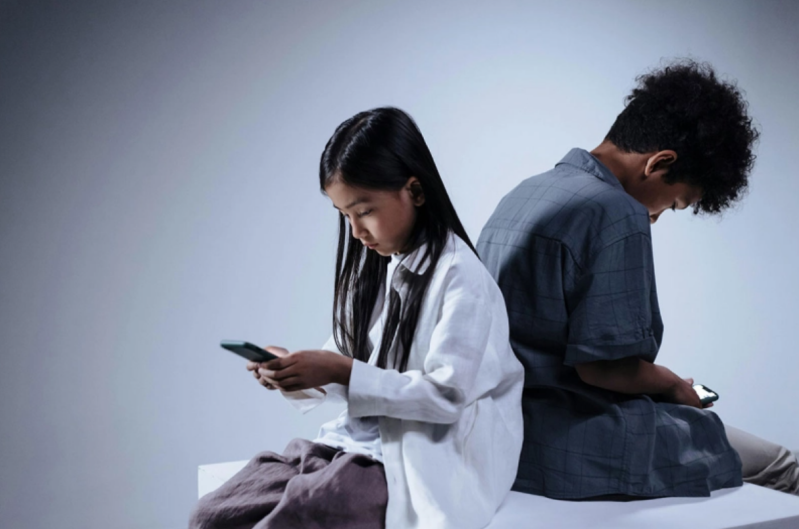
96 percent of American children and teens use social media on a daily basis and nearly half say they use it “almost constantly”, according to the Pew Research Center (PRC). The situation seems comparable in many other countries around the world. While experts have yet to confirm a direct correlation between social media use and poor mental health, there is growing evidence suggesting a connection to anxiety, depression and loneliness.
Some parents of children who have committed suicide or died from overdose or after participating in an online challenge point to social media as the cause.
Some social networking platforms already offer options to disable sensitive content, but a proposed law would require tech companies to make those options default on minors' accounts, if and when it passes in the United States.
The bill, known as KOSA (Kids Online Safety Act) was passed by 91 votes to 3 in the U.S. Senate. On the same day, the Senate also passed the Children's and Adolescent Online Privacy Protection Act, which would prohibit technology companies from collecting data from underage users.
The KOSA would require companies to make any content associated with online bullying, illegal drug sales or sexual exploitation inaccessible for children accounts. It would also ban features that encourage “addiction-like behavior” and predatory marketing practices.
As reported by Wired, proponents of the measure, including the Tech Oversight Project, a non-profit organization focused on accountability, saw the bill as a significant step toward holding technology companies accountable for how their products affect children.
“Too many young people, parents and families have experienced the terrible consequences that come from the greed of social networking companies,” commented Sacha Haworth, executive director of the Tech Oversight Project, in a statement in June. “The accountability that KOSA would provide to these families is long overdue.”
Others, such as the nonprofit digital rights organization Center for Technology and Democracy, asserted that, if enacted, the law could be used to prevent young users from accessing critical information on topics such as sexual health and LGBTQI+ issues. This prompted some organizations that typically push for accountability in Silicon Valley to side with the tech companies and their lobbyists in an attempt to kill the bill.
The problem worries parents and teachers. Life in social networks and outside them seems to have no limits for digital natives, according to what Flavio Calvo, doctor in psychology, teacher, lecturer and author, with a vast experience in youth ministry, told Diario Cristiano, Christian Daily International's Spanish edition.
“Today there is, for adolescents and children, a new socialization that happens through social networks, or rather social media. What used to be common for us to do in normal life (I put normal in quotation marks), today kids do through the networks. Whether it's forming friendships, playing sports, playing online games, etc. Followers on TikTok and other social media are just as important as friends. So, for us adults there is a difference between the virtual and the real, which for a teenager and a child does not exist. For them, the virtual is real,” said Calvo.
For educator Estuardo Salazar Gini, Continental Director for Latin America of the Association of Christian Schools International (ACSI), the issue is a consequence of the isolation caused by the COVID 19 pandemic, according to his comments to Diario Cristiano.
“The phenomenon of addiction and influence of social networks on the psyche of minors in the way the PRC presents it, in my opinion, should be studied in combination with the pandemic experience. I am referring to the long months between 2020 and 2021 where quarantine was in place, with forced isolation when screens were the only means of contact. That exacerbated the dependency that was already unhealthy, but there it became an epidemic worse than any virus. We protected them from one so that they could acquire another that is proving to have a more destructive and lethal power,” he stressed.
Diario Cristiano made a brief survey to parents and teachers, with three questions. 11.1% of those who responded said that there is no problem between social networks and the cognitive development of adolescents, while 88.9% of respondents admitted that they do find a problematic difficulty for their children interacting on social networks.
Regarding their experience in the family, the testimonies are all similar and can be summarized in a single phrase: “Distraction and lack of person-to-person socialization.” Although some of the respondents talked about setting limits, especially waiting until a certain age to allow them to have their networks and manage them unsupervised.
Laura Stigliani, a psychopedagogy graduate, told Diario Cristiano that “what should be very productive, ended up being very aggressive.”
For Salazar Gini, “the generation of post-pandemic students puts to the test the entire capacity of educators to not only recover what was not achieved but to do so under much more complex circumstances.”
“The impact of this phenomenon on the educational experience has made the work of schools even more challenging. The pandemic left us with a significant learning lag, to which we now add the pathologies of poor mental health, insecure self-esteem (because we are constantly seeking validation) and having acquired a diet of entertainment that makes the work of teachers more complicated. Lack of focus is no longer an exclusive profile of those diagnosed with ADHD (attention deficit hyperactivity disorder),” said the director of ACSI.
“They kill each other!” Stigliani exclaimed toward what often turns into a pitched battle between teenagers. “The bullying that goes on over Instagram is unbelievable, or over TikTok,” he said. He attributed it as an addiction that they can't get out of on their own, perhaps because of that inability to delineate digital from analog, which Dr. Calvo mentioned earlier.
“Also because of these online video games that are highly addictive, teenagers can't put them down. You are in the classroom, for example, and they are playing. There is no way for them to quit, because the video game time is pressing them. So they can't stop. Maybe they started it at recess and they have to continue because if they don't, they will lose, and if they lose, they lose to someone else and they fight, insult each other and the violence escalates and results in the bullying that I mentioned before,” said the psycho-pedagogue.
Dr. Calvo agrees with Stigliani's view and said that adolescents are “very influenced -emotionally - by the responses they have in networks. That is why cyberbullying and other issues have grown a lot due to their viralization. For all these reasons, they have a very strong emotional impact on teenagers who cannot leave the digital world. A teenager outside the networks or a child outside the networks has no social life”.
From the survey come statements that affirm Calvo's assessment. “My children do not have accounts on social networks that they manage. This doesn't mean that they don't log in with other people's phones and connect to YouTube for everything, which is a social network as well. When they can they open my Instagram account and watch reels and stories at an excessive level. My husband opened a YouTube channel for them where they create content on their mobile devices that my husband uploads and reviews. This has definitely created an obsession with them in counting every follower, every 'like', and every comment,” said one of the respondents to the survey.
In his professional journey, Stigliani encounters students who are also absorbed by vices such as online gaming, a scourge that Calvo brought up when he mentions that the issue is “not only in social media, but also in games, in PlayStation, and certain online games. Because, for example, those who groom get much more involved in online games than in social networks,” which is part of an interwoven and increasingly pronounced problem. Both focus on connectivity.
“There are kids in third or fourth grade, doing online gambling. In these casinos, they are not legal, they are online but they do not register whether it is a minor who is playing or an adult”, said Stigliani, who sometimes finds himself in the classroom with all kinds of situations caused by the use of cell phones.
From a social point of view, Calvo believes a key issue to be addressed is the age at which minors should be allowed to use cell phones. “The truth is that it is appropriate for children under 12 years of age not to have their own cell phones. But the reality is that children have cell phones from an increasingly younger age. So many times not giving them a cell phone at 9, 10 years old is to leave them out of their socialization.”
When asked what to do, or how to proceed to guide and accompany children and adolescents, Dr. Calvo said that “the adult has to come alongside from a place of discovering together what is good, what is appropriate.” He said that, “this can be done well if it is done from the beginning. That means, when a child is 14, 15 years old, you will not be able to monitor who their friends are on Instagram or TikTok. Then it is too late. But when they start to have their first cell phones, you have to start accompanying them in certain things that are appropriate. For example, only accept people you know, or take care of what kind of conversations they have.”
From a pragmatic point of view, Stigliani said that there are educational institutions where teachers and parents together agreed not to allow the use of cell phones in the classroom. And as a rule they include leaving the devices in a box or in a closet during the time they remain in the classrooms. “Logically, this practice generates displeasure in children, because for them, as for many adults, everything has to be counted or shown. As if it is not in the networks it does not exist. And that's how they live it,” he said. “The interesting thing is that they finish what they're doing and then, as a reward, they return the cell phone when they finish the whole activity, and they are all happy.”
From a parental point of view, some parents expressed in the survey that the important thing is to be able to limit the time spent using digital devices: cell phones, video game devices, tablets, etc. One parent brought it to the point: “Take away the electronic pacifier and help them to go out to kick the ball, jump rope and ride a bike with their friends.” Also generate “a lot of dialogue and teach them by example that you can disconnect, detox and that real life does not fall apart because [you put away the device],” said another respondent.
Estuardo Salazar Gini said that “the emotional and mental profile of the 21st century student is something that we are not prepared for. The tools of psychology, sociology or anthropology are not enough to manage this phenomenon effectively. To rescue this generation, we need the power of the gospel, the love of Christ and the wisdom of God.”
Originally published by Diario Cristiano Internacional





